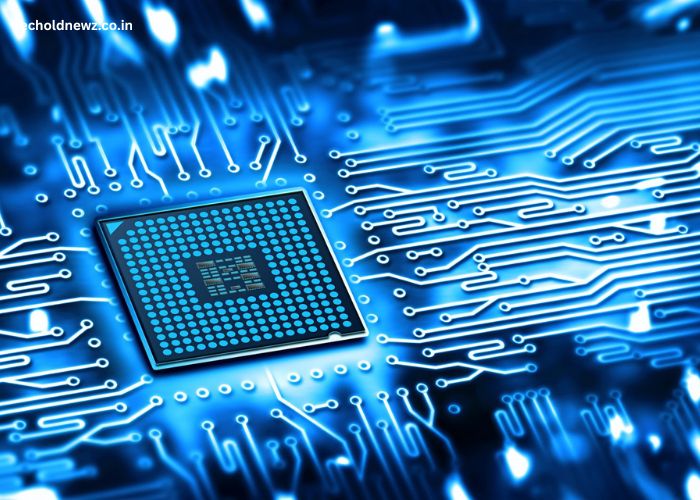Digital electronics is a branch of electronics that deals with circuits and systems that use digital signals. Unlike analog electronics, which operate on continuous signals, digital electronics rely on discrete signals, typically represented as binary code (0s and 1s). This makes digital systems more precise, efficient, and reliable for various applications.
From smartphones and computers to advanced medical devices and industrial machinery, digital electronics powers much of the technology we use today. In this guide, we’ll dive into its core concepts, components, and real-world applications.
Key Points:
- Digital electronics processes signals in binary format (0s and 1s).
- It forms the foundation of modern computing and communication technologies.
- Its precision and reliability make it ideal for a wide range of applications.
How Does Digital Electronics Work?
Digital electronics operates on the principle of binary logic. Each signal is represented by two states:
- 0 (Low): Represents the absence of voltage or a low state.
- 1 (High): Represents the presence of voltage or a high state.
Digital circuits process these signals through a combination of logic gates (AND, OR, NOT, etc.) to perform various tasks like computation, data storage, and signal processing.
Key Components of Digital Electronics:
- Logic Gates: Basic building blocks used to perform logical operations.
- Flip-Flops: Memory elements used to store binary data.
- Microprocessors: Complex circuits that perform computations and control tasks.
- Registers: Temporary storage units for binary data.
| Component | Function | Example |
|---|---|---|
| Logic Gates | Perform basic logical operations | AND, OR, NOT gates |
| Flip-Flops | Store one bit of binary data | D flip-flop, JK flip-flop |
| Microprocessors | Execute instructions for computing tasks | Intel i7, ARM Cortex |
| Registers | Store and manipulate binary data | General-purpose registers in CPUs |
Note: Understanding these components helps you grasp the inner workings of digital devices.
Why Is Digital Electronics Important?
Digital electronics has revolutionized industries and everyday life. Its importance lies in its ability to process data efficiently, reliably, and with high precision.
Key Benefits:
- High Accuracy: Digital signals are less prone to distortion, ensuring precise outputs.
- Reliability: Digital circuits are more stable and less affected by environmental changes.
- Scalability: Digital systems can be easily scaled for complex applications, from simple calculators to supercomputers.
For instance, digital electronics has enabled advancements in communication technology, allowing us to send data across the globe almost instantly through devices like smartphones and laptops.
What Are the Applications of Digital Electronics?
Digital electronics is at the heart of many devices and systems we use daily.
Examples of Applications:
- Consumer Electronics: Smartphones, laptops, televisions, and gaming consoles.
- Communication Systems: Mobile networks, satellite communications, and Wi-Fi systems.
- Industrial Automation: Robotics, PLCs (Programmable Logic Controllers), and sensors in manufacturing.
- Healthcare: Medical imaging systems, wearable devices, and diagnostic machines.
| Application Area | Example Devices | Purpose |
|---|---|---|
| Consumer Electronics | Smartphones, laptops, TVs | Entertainment, communication, and work |
| Communication Systems | Wi-Fi routers, mobile networks | Data transmission and connectivity |
| Industrial Automation | Robots, sensors, PLCs | Streamlining manufacturing processes |
| Healthcare | CT scanners, ECG machines | Monitoring and diagnosing health issues |
How Does Digital Electronics Differ From Analog Electronics?
The primary difference between digital and analog electronics lies in how they process signals.
Digital vs. Analog Electronics:
| Aspect | Digital Electronics | Analog Electronics |
|---|---|---|
| Signal Type | Discrete (0s and 1s) | Continuous |
| Accuracy | High, less prone to noise | Lower, more prone to distortion |
| Storage | Data stored as binary codes | Data stored as continuous waveforms |
| Applications | Computing, communication systems | Audio amplifiers, radio broadcasting |
Reminder: While analog systems are still relevant for certain tasks, digital electronics dominate due to their precision and versatility.
What Are The Challenges in Digital Electronics?
Despite its numerous benefits, digital electronics faces certain challenges:
- Complexity: Designing digital systems for advanced tasks can be highly complex.
- Power Consumption: High-speed digital circuits often consume significant power.
- Heat Dissipation: As circuits become more powerful, heat management becomes crucial.
Example Solutions:
- Low-Power Design: Using energy-efficient components and algorithms.
- Thermal Management: Implementing heat sinks and cooling systems to prevent overheating.
Addressing these challenges is essential for further advancing the field of digital electronics.
Conclusion: The Future of Digital Electronics
Digital electronics is the backbone of modern technology. It powers everything from the devices we use daily to the systems that run industries. As technology evolves, the role of digital electronics will only grow, paving the way for innovations like AI, IoT (Internet of Things), and quantum computing.
Understanding digital electronics is not just for engineers—it’s for anyone curious about how the modern world works. By appreciating its principles, components, and applications, we can better navigate the digital age.
FAQ’s
- What is the full form of ICT in digital electronics?
ICT stands for Information and Communication Technology, which integrates digital electronics for data processing and communication. - What are the basic components of digital electronics?
Basic components include logic gates, flip-flops, microprocessors, and registers. - How does digital electronics differ from analog electronics?
Digital electronics uses discrete binary signals, while analog electronics relies on continuous waveforms. - What are some real-world applications of digital electronics?
Applications include smartphones, laptops, medical devices, and communication systems like Wi-Fi and satellite networks. - What challenges does digital electronics face?
Challenges include design complexity, power consumption, and heat dissipation in advanced systems.


